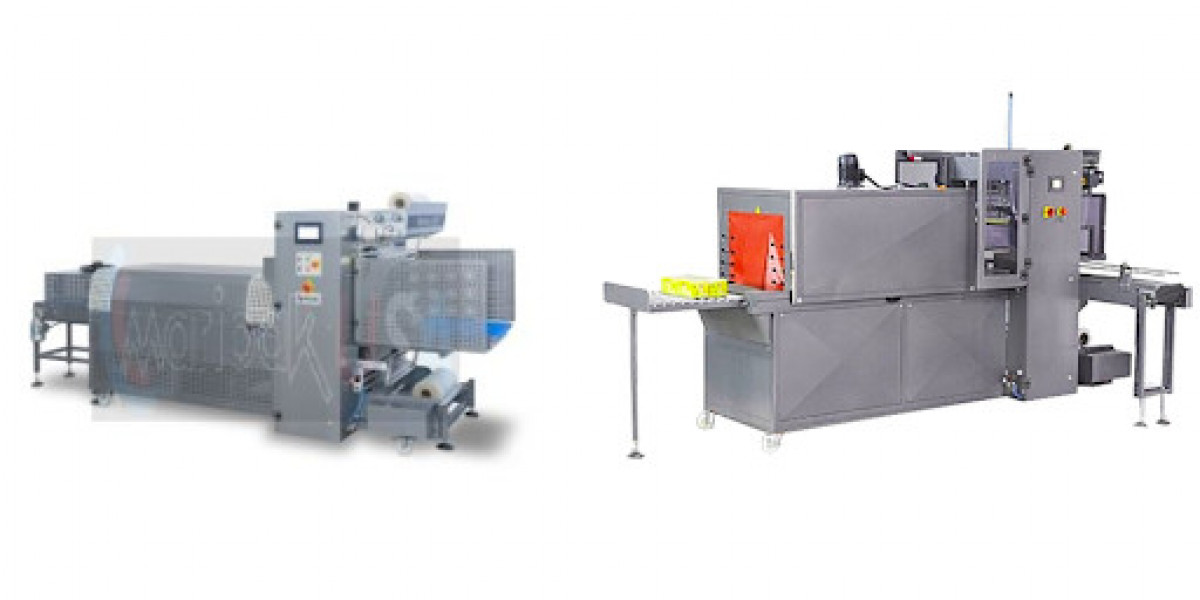Maintaining product quality and operational efficiency is essential in packaging operations, and the role of a shrink film wrapping machine is central to this process. While these machines are designed to wrap and protect products efficiently, their performance can be significantly influenced by how the shrink film is stored. Proper storage practices ensure consistent wrapping results, prevent material wastage, and extend the life of both the film and the machinery.
Understanding Shrink Film
Shrink film is a thermoplastic material that contracts when heat is applied, tightly encasing products for protection and aesthetic appeal. Common types include polyolefin, PVC, and polyethylene films, each offering specific characteristics in terms of shrink ratio, clarity, and strength. Improper storage can compromise these properties, leading to uneven shrinkage, tearing, or film brittleness during wrapping.
The Effects of Poor Film Storage
Environmental Factors
Shrink film is sensitive to temperature, humidity, and light exposure. Excessive heat or direct sunlight can cause the film to stick together, deform, or lose its elasticity. Conversely, extremely cold environments may make the film brittle and prone to tearing. Humidity fluctuations can also lead to static buildup or moisture absorption, reducing the film’s performance on the shrink film wrapping machine.
Film Contamination
Dust, dirt, and other contaminants can adhere to improperly stored film rolls. When these particles are incorporated into the wrapping process, they can create bubbles, wrinkles, or punctures in the finished package. Contaminated film can also damage the rollers and heating elements of the machine, increasing maintenance requirements.
Material Deformation
Improper stacking or pressure on film rolls may cause them to become misshapen. This deformation can make it difficult to feed the film smoothly into the wrapping machine, causing operational delays or inconsistencies in packaging quality.
Best Practices for Shrink Film Storage
Temperature and Humidity Control
Store shrink film in a cool, dry environment away from direct sunlight. Ideal storage temperatures typically range between 65°F and 75°F, with relative humidity maintained below 50 percent. Climate-controlled storage rooms or cabinets are recommended for facilities with extreme seasonal variations.
Proper Roll Orientation and Handling
Film rolls should be stored horizontally on shelves or racks designed to prevent crushing or deformation. Avoid stacking rolls too high, and use protective packaging such as plastic covers or shrink-wrap sleeves to prevent dust and dirt accumulation. When handling rolls, use gloves to minimize the transfer of oils and dirt from your hands.
Inventory Rotation
Adopting a first-in, first-out (FIFO) approach ensures that older film is used before newer stock. This reduces the risk of material degradation over time and prevents the unnecessary disposal of expired or compromised film rolls.
Regular Inspection
Inspect film rolls periodically for signs of damage, discoloration, or contamination. Early detection of compromised film allows for timely replacement and prevents disruptions during the wrapping process. Implementing a routine inspection schedule also helps maintain quality control standards across production lines.
Impact on Operational Efficiency
Properly stored shrink film not only preserves material integrity but also enhances the efficiency of the shrink film wrapping machine. Smooth film feed reduces machine downtime, ensures uniform wrapping, and minimizes film waste. Operators can maintain consistent production speeds and achieve a professional, high-quality finish on all packaged products.
Additional Considerations
Compatibility with Machines
Different shrink films have specific characteristics and heat requirements. Ensuring that the stored film is compatible with the wrapping equipment avoids operational issues. Always refer to manufacturer guidelines for both film and machine specifications to optimize performance.
Employee Training
Training staff on proper handling and storage techniques is essential. Educated personnel are less likely to mishandle rolls, and they can identify potential storage issues before they impact production. Clear signage and written protocols can reinforce best practices in the workplace.
Supply Chain Management
Maintaining a well-organized inventory system ensures that shrink film is readily available when needed. Timely replenishment avoids last-minute sourcing from external suppliers, which could introduce variations in film quality or specifications, affecting the consistency of the wrapped products.
Conclusion
Proper storage of shrink film is a critical factor in maximizing the performance and longevity of shrink film wrapping machines. By controlling environmental conditions, handling rolls correctly, implementing FIFO inventory practices, and performing regular inspections, businesses can reduce waste, prevent equipment strain, and ensure consistently high-quality packaging. Additionally, integrating compatible equipment such as a heat sealing machine can further enhance packaging integrity, providing secure and professional results while optimizing operational efficiency.








